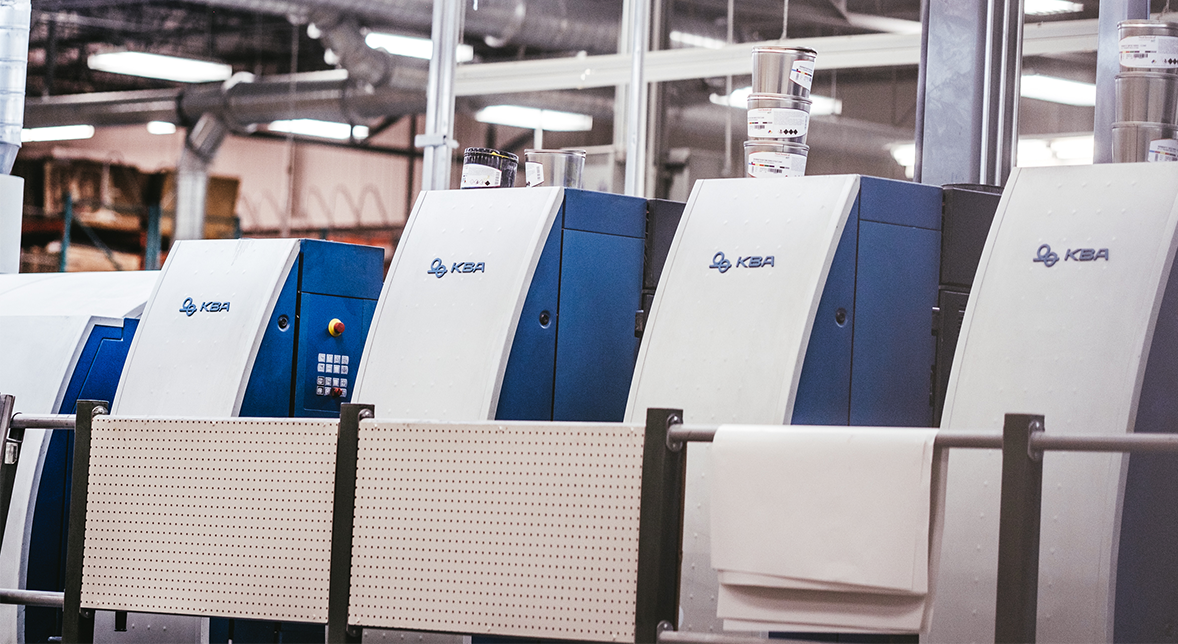Offset printing is a printing press technique where ink is transferred from a plate to a rubber roller and then to a paper material. It is typically used in mass production for brochures, stationary, magazines and boxes.
Offset printing is the most widely used printing option because of its low cost and because it creates high quality prints. There are two main types of offset printing: web-fed and sheet-fed.
Web-fed Offset Printing
Web-fed offset printing is typically what we see in newspaper, multi-page magazine or catalogue printing. Rolls of paper are fed continuously through the press. The paper is cut later. It produces a great amount of copies for organizations that need a lot printed in a small time frame.
Sheet-fed Offset Printing
Sheet-fed offset printing is different than web-fed printing because the paperboards are fed individually. Yet, thanks to modernization in the past years, its speed has increased for it to be as performing as web-fed offset printing. This is most typically used in carton packaging printing.
Before getting into the process of offset printing, it is highly important to have the artwork finalized and converted from RBG to CMYK, that is, the colors need to be in the right format. Our team of pre-press profressionals at Netpak are here to make sure your artwork is print-ready and that you will incur no additional time delays due to any artwork issues. Find out more about our pre-press services here.
The Offset Printing Process
First, your artwork is printed on a plate to give what we call a ‘type’. It is usually made of a sheet of metal, yet today, paper/polyester might be used. It is important to note that aluminum still gives the best results. The reverse side is also transferred to a plate.
The impressions on the plate are transferred to a cylinder, which will now be used in the offset printing machine. Note that if your print is double-sided, 2 plates will be needed. Finally, a rubber roller then feeds the paperboard into the press. The cylinder (which can also be made of rubber) contains your artwork’s impression from the plate and transfers (prints) the artwork onto the paperboard.
If you’re still debating, note that there are great benefits to using offset printing such as: high quality and true colors, low cost, and the process is fast, efficient, flexible and dynamic. Contact one of our experts at Netpak to discuss all the options available to you when choosing offset printing for your packaging.
Netpak: Printed Folding Carton Experts. Contact us today for a quote: sales@netpak.com | CANADA – USA 1-866-399-8544
